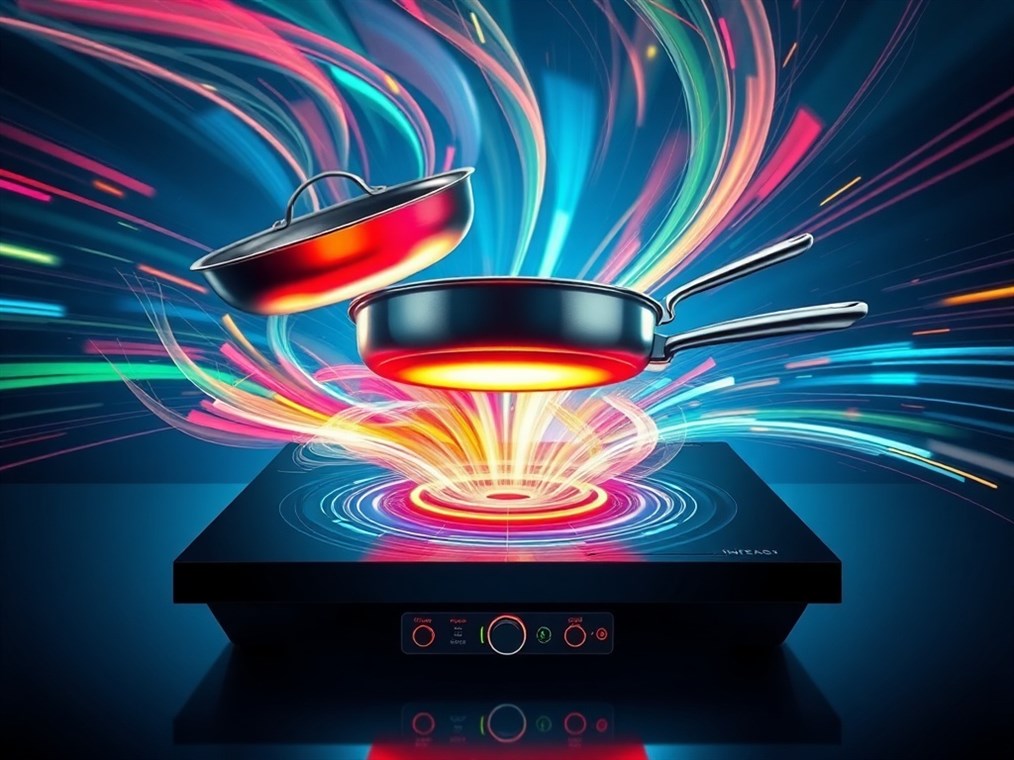Induction Pans: Gotta Be Magnetic? Let’s Get Real.
So, induction cooking is all the rage these days, right? Super fast, saves energy, and you can dial in the exact temperature you need. But then you hit the cookware aisle and BAM! Confusion sets in. The big question everyone asks: do your pans have to be magnetic for induction? Well, yeah, pretty much. But the why is where it gets interesting, diving into the cool science that makes induction tick.
Forget flames and glowing coils. Induction cooktops are different animals altogether. Underneath that smooth glass surface, there’s a coil of copper wire. When you fire up the cooktop, electricity zips through that coil, creating a magnetic field that’s constantly changing. Think of it like an invisible force field humming away.
Now, here’s the magic. This magnetic field gets all cozy with the pan you’ve got sitting on the cooktop. If that pan is made of the right stuff – something we call ferromagnetic – the magnetic field gets to work. It creates an electric current inside the pan itself. This current, swirling around like water down a drain (they call ’em eddy currents), meets resistance in the pan’s material. And what happens when electricity meets resistance? You got it: heat! The pan becomes the heating element. Pretty neat, huh?
Okay, so “ferromagnetic” sounds like something out of a sci-fi movie. But it’s simpler than it sounds. These are materials, like iron, steel, and nickel, that are seriously attracted to magnets. They’re like magnetic groupies, totally drawn to the force. This “ferromagnetism” thing lets them concentrate and amplify magnetic fields.
What does that mean for your cooking? Simple: a ferromagnetic pan sucks up that magnetic field from the cooktop like a sponge. This creates a strong eddy current, which means super-fast, efficient heating.
Want to know if your pan will work? Grab a magnet! If it sticks firmly to the bottom of the pan, you’re probably good to go. But a weak, sliding stick? That pan might not have enough oomph to get the job done.
Now, what about those pretty aluminum or copper pans you’ve got your eye on? Or even that fancy glass cookware? Sadly, on their own, they’re a no-go for induction. They just don’t play well with magnetic fields, so no eddy currents, no heat. Bummer, right?
But don’t despair! Clever manufacturers have found a workaround. They’ll often slap a layer of ferromagnetic material, usually stainless steel, onto the bottom of aluminum or copper pans. This gives the pan the magnetic mojo it needs to heat up on an induction cooktop. Problem solved!
Stainless steel is a tricky one. Some stainless steel is magnetic, some isn’t. It all boils down to what it’s made of. Some types, like austenitic stainless steel, are total rebels and refuse to be magnetic. Others, like ferritic and martensitic, are happy to stick to a magnet. So, always do the magnet test or check what the manufacturer says before you buy. Trust me, it’ll save you a headache later.
So, you’re ready to dive into the world of induction cooking? Here’s the lowdown on picking the right cookware:
- Material Matters: Hunt down pans made of cast iron, enameled cast iron, carbon steel, or that magnetic stainless steel we talked about.
- Magnet Time: Seriously, that magnet test is your friend. Use it!
- Flat is Where It’s At: Make sure your pan has a nice, flat bottom that sits flush with the cooktop. No wobbling allowed!
- Size Counts: Match the size of the pan’s bottom to the size of the burner.
- Read the Fine Print: Always double-check the product info or manual to make sure it says “induction compatible.”
Okay, so needing magnetic pans might seem like a pain, but it’s the secret sauce behind induction cooking’s awesome power. Get the right cookware, understand the science, and you’ll be whipping up culinary masterpieces on your induction cooktop in no time. Happy cooking!

